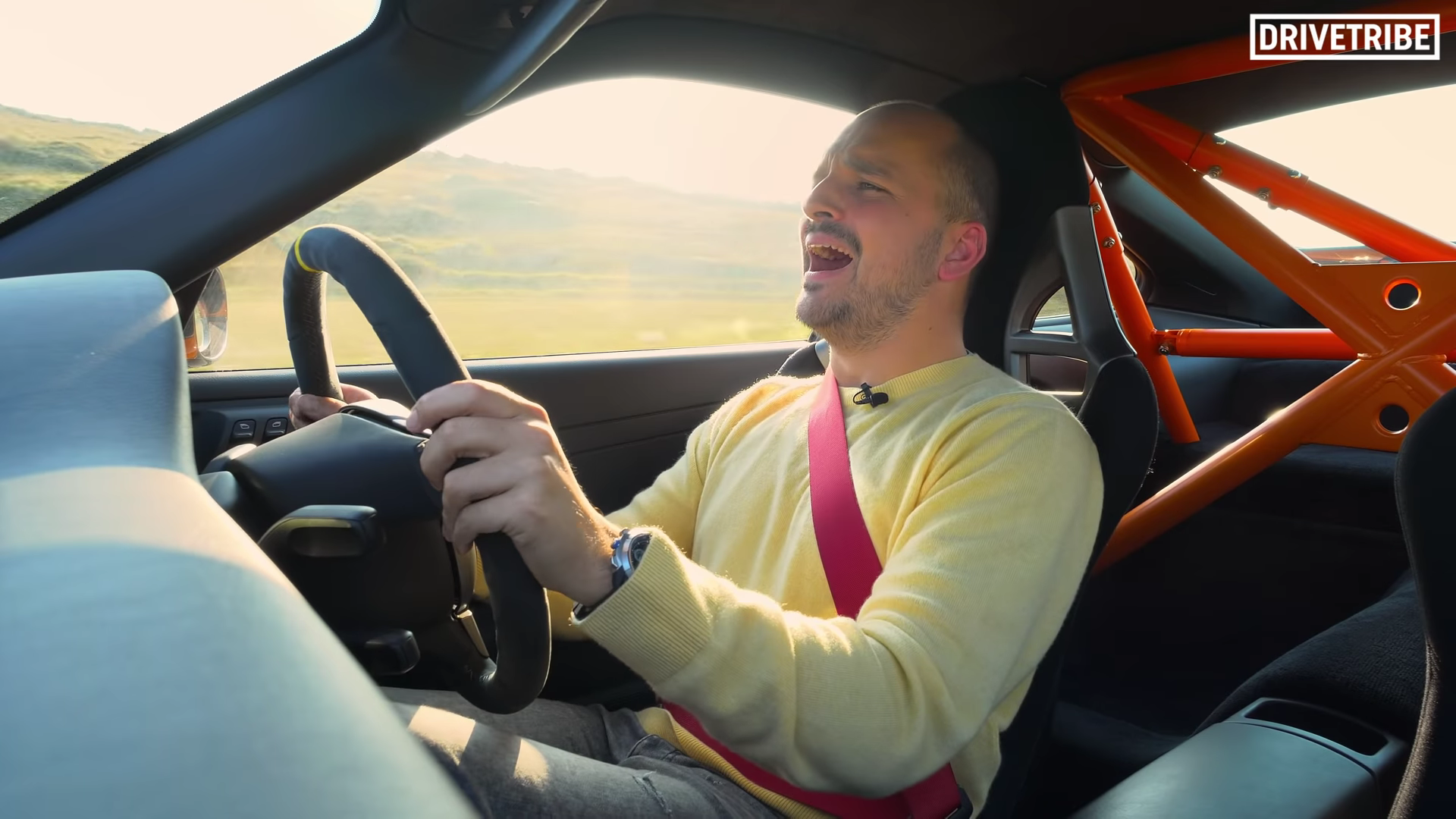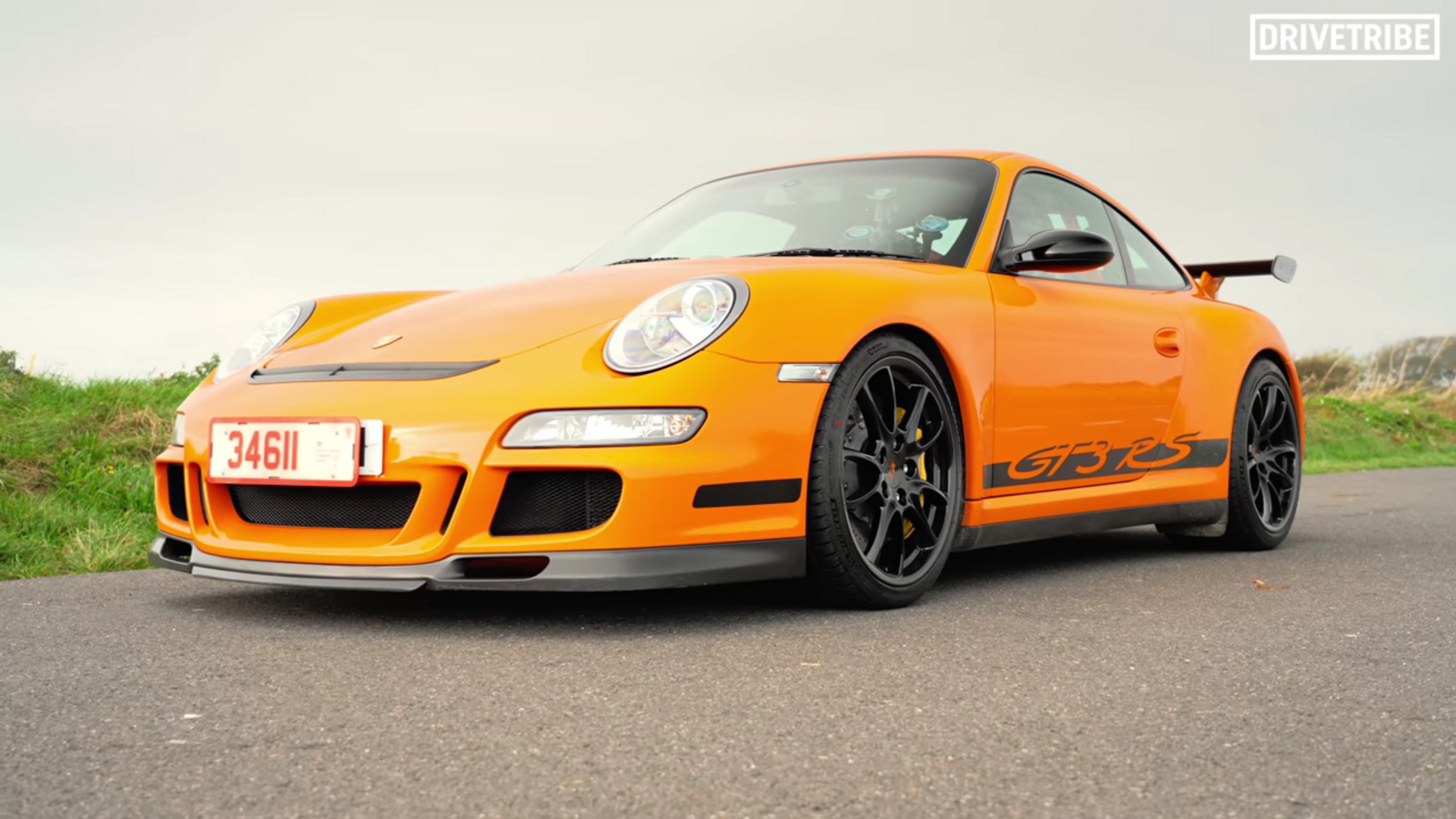Revisiting Richard Hammond's Favorite GT3 RS
















The Modern Favorite
Why do the 997 cars pull hardest on our heartstrings? A better shape? A smaller footprint and a greater feeling of agility? The trusty ol' six-speed with notchy gates? There are a number of tactile differences between this car and its successors, but the reason it's preferred isn't all that clear.
To get a better idea of why this particular generation is so revered, Drivetribe took a trip down memory lane to refresh themselves on the magic of the 997.1 GT3 RS—a car Richard Hammond has always been a strong proponent of.
Light is Right
A carbon wing, a plastic trunk lid, a plexiglass rear window, and a pared-down interior bring this very decently appointed car's weight down to 3,020 pounds. Compare that to the 991.1 GT3 RS' weight of 3,130 pounds. A difference of 110 pounds is definitely felt in such a light car.
The Effect of a Smaller Size
The difference in widths isn't that extreme, but a sensitive hand will sense the effect of incremental increases in length and breadth. When one car felt easy to stick on one particular stretch of asphalt, another feels more and more like a tank; you are no longer certain you won't scrape a fender against that mailbox leaning a little too far out into the road.
Sublime Steering
As most everything nowadays has electric steering, it's easy to pine for the old days when a Porsche's steering wheel would regularly writhe in your hands. Well, as good as the modern electric units are in the current GT3s, they just don't compare to the old ones.
The 997's front end may lack the outright grip its successor has, but the way it transmits all of the information on the surface of the road through the column and into your hands is addictive; few steering racks are as sharp and communicative.
A Detailed Sensory Experience
If modern cars represent all that engine calibration and intelligent suspension can provide, they may lack a little in terms of involvement and sense of occasion; they just do everything so well, and there are not many rough edges to relish.
The interesting thing is that what could be perceived as flaws to the statistic-obsessed isn't necessarily a hindrance. The 997, flawed as it might be, offers a busy, engaging partner to take on casual jaunts through the country or on a flat-out lapping session. There's a real sense of a mechanical device clattering away underneath you that the refined 991 doesn't quite provide.
Staying Slim
There are some things that can't be compensated for with more power, a wider footprint, and sophisticated rear-wheel steering systems. Those things are weight, width, and overall size. These things make the car so much easier to place on small roads.
A Raw Edge
True, the lap times have dropped with the newer cars, but remember that as aggressively styled and focused as a GT3 RS is, it's still meant to be driven quickly on backroads. The appeal of the 997 lies in the fact that its weight is considerably lower, its size is smaller, and it's less about efficiency than its younger siblings. This means that there's an immediacy and a slightly imperfect character about the car that makes it so exhilarating.
A Stylish Balance
Gone are the maligned fried-egg headlights of its forebear. The girthier successor has too much heft for some. The 997 sits in between these two; small, nimble, a little nervous, stylish, and smart. There are few cars that check all the boxes, and this isn't one of them. It's flawed, and that's part of why it's so beloved.
